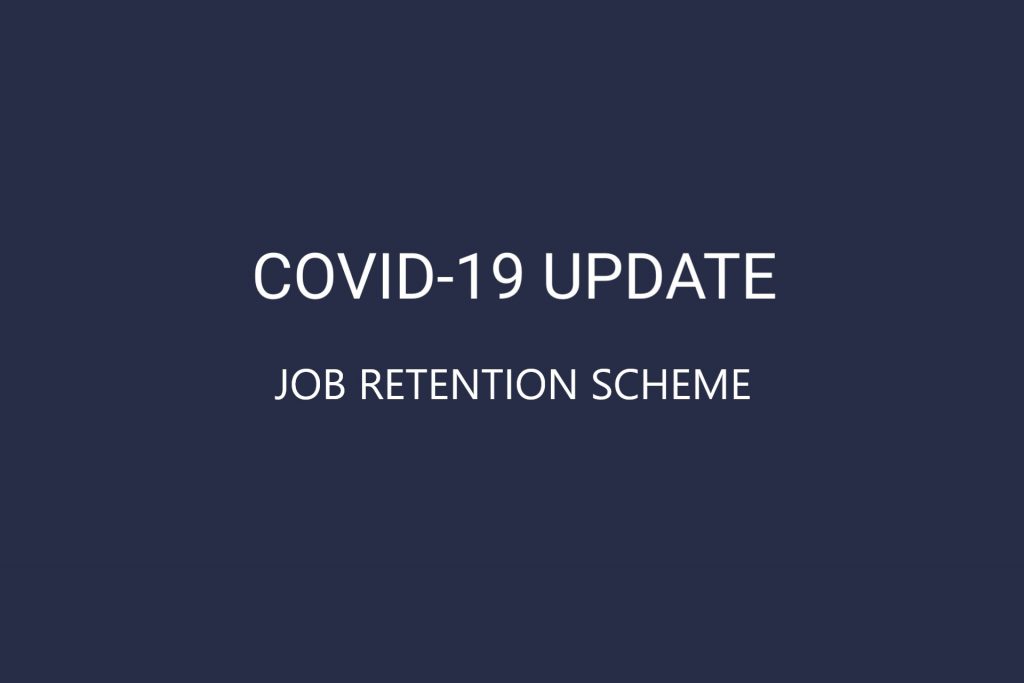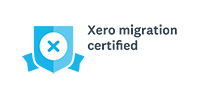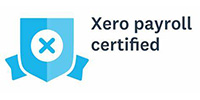The aim of the Coronavirus Job Retention Scheme (CJRS) is to enable employers to retain employees who will be needed when the business begins to rebuild in the future (when the pandemic has eased), rather than having to make them redundant. It does so by creating a new category of employment, known as a ‘furloughed employee’, who remain employed but are not working.
The CJRS is available for any employee, including domestic staff, who was on the payroll by 19 March 2020 and was reported to HMRC as an employee by that date. Any UK employer, whether small or large, charitable or non-profit, can utilise the scheme. Crucially, only employees who were formally placed on furlough on or before 10 June 2020 will qualify for future grant support in respect of their furlough wages.
First Phase – Up to 30 June
The first phase of the CJRS will run from 1 March 2020 through to 30 June 2020 and will provide a grant (not a loan) to the employer to cover, for each employee:
- 80% of the employee’s regular wage (capped at £2,500) per month; plus
- The related employers’ National Insurance Contributions (NIC); and
- Minimum Auto Enrolment Employer Pension Contributions on that wage.
Second Phase – 1 July onwards
The second phase of the CJRS will run from 1 July 2020 through to 31 October 2020 at which point the CJRS will end. Under the second phase the and will provide a grant (not a loan) to the employer to cover, for each employee:
- July – Government pays 80% of normal wages, up to £2,500 per month along with employer NIC and pension costs on this amount (as per phase 1)
- August – Government pays 80% of normal wages, up to £2,500 per month, but employer must pay employer NIC and pension costs on this amount
- September – Government pays 70% of normal wages, up to £2,187.50; employer must pay 10%, plus all the employer NIC and pension costs.
- October – Government pays 60% of normal wages, up to £1,875; employer must pay 20% plus all the employer NIC and pension costs
Furloughed employees
Furloughed members of staff must not work for the employer during the period of furlough. However, furloughed workers can undertake training while they are on furlough.
The employee must agree to be furloughed, and the employer must communicate to each furloughed employee in writing that they are furloughed, and obtain their agreement to any reduction in their contractual wages. A copy of this communication should be kept by the employer for 5 years.
An employee does not have to accept furlough if offered, but the employer could make the employee redundant instead, as long as the appropriate employment law procedures are followed.
While employees are on furlough, they are not working, so the National Living Wage (NLW) does not apply during that period. Thus, if their pay is reduced to a level below the NLW or (where appropriate) National Minimum Wage rate while on furlough, that is permitted. However, time spent training or on annual leave must be paid at normal contractual rates, even when furloughed.
When an employee is first placed on furlough, that initial furlough period must last for at least three weeks. However, after three weeks on furlough staff can be brought back to work, for example to replace those still working who later become sick.
Eligible Employees
A CJRS claim can be made for employees who have been furloughed for at least three weeks, including all of the following:
- Those on unpaid leave as long as that leave started after 28 February 2020
- Apprentices (but note the guidance on training)
- Agency workers including those employed by umbrella companies
- Those on zero-hours or fixed-term contracts
- Salaried members of LLPs
- Those subject to off-payroll rules in the public sector, classified as “deemed employees”
- Employees transferred into the current employment via a TUPE arrangement after 19 March 2020
- Nannies and domestic staff
Those made redundant after 28 February 2020 but who have been re-employed by the same employer, even if after 19 March 2020, can also be furloughed.
Employees with more than one employment can be furloughed by one employer and continue to work for and get paid by their second employer.
In addition, the following employees may be brought on to furlough and be eligible for the grant:
- Those returning from maternity, paternity or adoption leave
- Those returning from sick leave
Note that employees who are receiving statutory sick pay (SSP) cannot be included in the grant application. The grant does not cover SSP. However furloughed employees can be moved on to SSP.
CJRS to 30 June 2020 (Phase 1)
The CJRS is available for any employee who was on the payroll by 19 March 2020 and was reported to HMRC as an employee on an RTI submission by that date.
The furlough period can begin from 1 March 2020 (i.e. be backdated) and the grant will be available to cover wages paid to furloughed employees for periods until the end of June. The grant covers for each employee:
- 80% of the regular wage (capped at £2,500) per month; plus
- related employers’ National Insurance Contributions (NIC); and
- minimum auto enrolment employer pension contributions on that wage.
This gives a maximum grant per employee per month of (using 2020/21 rates) £2,500 + £244 (employers’ NIC) + £59 (pension contribution) = £2,803.
Claims should be made from the date the employee finishes work and starts furlough, not when the decision is made.
The employer must submit a CJRS claim for a furlough period ending on or before 30 June, before it is permitted to claim under the CJRS for periods from 1 July onwards.
The final deadline by which any claims relating to phase 1 of the scheme must be made is 31 July 2020.
CJRS from 1 July 2020 (Phase 2)
No new employees can be furloughed from 1 July 2020 and no new employers can use the CJRS from that date. Where an employee has not been furloughed so far, they must start their first period of furlough by 10 June 2020 in order to complete 21 days of furlough by 30 June 2020.
The maximum number of employees included in a claim from 1 July onwards cannot exceed the number of employees that employer included in any CJRS claim for periods up to 30 June 2020.
The scheme will allow far more flexibility to permit employees to be furloughed for any length of time, even down to a few hours. The maximum pay while on furlough will be prorated down from £2,500 per month according to the amount of time the employee
spends on furlough. For example, an employee who is furloughed for 40% of his normal working time, can be paid maximum furlough pay of £1,000 per month (£2,500 x 40%).
From August, any furloughed employee must still receive at least 80% of their normal regular wage, but any employer using the scheme will have to make a contribution to furloughing costs, as follows:
- August – Government pays 80% of normal wages, up to £2,500 per month, but employer must pay employer NIC and pension costs on this amount
- September – Government pays 70% of normal wages, up to £2,187.50; employer must pay 10%, plus all the employer NIC and pension costs.
- October – Government pays 60% of normal wages, up to £1,875; employer must pay 20% plus all the employer NIC and pension costs
Administration of the scheme
HMRC opened its online service to receive CJRS grant applications on 20 April. The funds should be paid to the employer six working days after application. The delay between application and payment is to allow HMRC to undertake checks to prevent fraud.
To access the grant the employer must have a PAYE online account, but we can submit a grant application on your behalf, as your tax agent, if you have authorised us to act for you for PAYE matters
Information required
To submit the grant application the employer (or tax agent) will need the following information:
- Number of employees included
- Name and National Insurance number of each employee
- Payroll number of each employee – or some way of distinguishing each employee
- Employer’s PAYE reference number
- Employer’s UTR number for business or company, or company registration number
- Start date and end date of the claim period
- Amount claimed (there will be an online calculator to help with this)
- UK bank account number and sort code
- Contact name and phone number
Relevant employees must be designated as ‘furloughed employees’, whom the employer will then pay through the payroll, reporting payments to HMRC in the normal way under Real-Time Information (RTI).
HMRC expects the employer to make the claim either shortly before or during the process of running the payroll, and the claim should use the amounts of salaries reported in the payroll.
What is not covered by the CJRS
The following amounts should not be included in a CJRS claim:
- Any SSP paid to the employee
- Any employers’ NIC covered by the Employment Allowance
- Any Apprenticeship Levy due
- Pension contributions paid in excess of the minimum auto enrolment employer contribution
If the employee has opted out of the pension scheme there are no employer pension contributions to claim for. Student loan repayments must be deducted from the employee’s wages and paid over, as normal.
Maximum grant claimable
The maximum grant will be calculated per employee and is the lower of:
- 80% of an employee’s ‘regular wage’ or salary, as reported in their last pay period prior to 19 March (pro-rated to the period of furlough); and
- £2,500 per month; plus the associated employers’ NIC on this amount and the minimum automatic enrolment employer pension contributions on that wage (unless the employee has opted out).
This gives a maximum grant per employee per month of (using 2019/20 rates) £2,500 +£246 (employers’ NIC) + £59 (pension contribution) = £2,805. For 2020/21, this figure will become £2,803.
Claims should be made from the date the employee finishes work and starts furlough, not when the decision is made.
The salaries paid remain deductible for tax purposes by the employer and the grant will be taxable income of the employer. Where the employer is an individual and not a business, such as an individual employing domestic staff, the CJRS grant will not be treated as taxable income.
Employee’s “regular wage”
For full-time and part-time employees, the base for the 80% calculation is the employee’s actual salary as of 28 February 2020.
For employees whose pay varies, HMRC guidance advises the following:
- If the employee has been employed (or engaged by an employment business) for a full twelve months prior to the claim, you can claim for the higher of either: the same month’s earnings from the previous year: or average monthly earnings for the year.
- If the employee has been employed for less than a year, claim for an average of their monthly earnings since they started work.
- If the employee has been employed for less than a month, prorate their earnings so far to claim.
- Past overtime and compulsory commission payments are included.
- Fees paid to agencies, discretionary commission, non-cash payments, bonuses and tips are excluded.
Making up regular pay
The employee should be paid at least 80% of their “regular wage” while furloughed. There is no requirement for the employer to ‘top up’ the furlough pay to 100% of the regular pay, although some employers will do so. However, it is likely that the employee’s contract of employment will require the full salary to be paid, unless the employee and employer agree to a different arrangement during the furlough.
From August 2020 onwards, the CJRS grant will not cover the full costs of furloughing the employees (see above). However, employees must still receive 80% of normal pay while on furlough. Employers are not permitted to change the employee’s terms and conditions to reduce their pay to the levels of support provided by the CJRS grant.
Owner-managed companies
Many director/shareholders pay themselves small salaries and the balance of their income as dividends from their companies. The CJRS does not cover the payment of dividends; only the salary paid under PAYE is eligible for the grant available under the scheme.
Directors of their own companies can be furloughed, but they must not provide any services to or on behalf of the company, or generate any income for the company or any connected business while they are furloughed. Directors can undertake statutory duties while furloughed that would reasonably be judged as necessary, such as submitting statutory returns and supplying
information to HMRC.
Directors who control their company should not operate the company’s business as a self-employed trade while furloughed, as that self-employed business would be connected to the company and break the “no working” furlough conditions. Directors are not eligible for help under the Self-employment Income Support Scheme (SEISS).
Other matters
The impact on job sharing employees will be a matter both for negotiation with staff and employment law.
Where a salary sacrifice scheme is in place, employees cannot normally move freely in and out of that scheme, as a change in contract terms is required first. However, HMRC has agreed that the coronavirus is a “life event” which allows the employee to move out of the salary sacrifice scheme. This is particularly important for schemes involving pension contributions. Employees can choose to have a higher percentage of their contracted earnings paid as pension contributions while on furlough.
CJRS grant is taxable
The amounts paid to an employee on furlough are deductible for tax purposes by the business (as normal) and the CJRS grant is taxable income of the employer. Where the employer is not a business, such as an individual employing domestic staff, the
CJRS grant will not be treated as taxable income.
Have any queries?
If you have any queries regarding the CJRS we would ask that you email your usual contact in the first instance and we will endeavour to respond just as soon as we can.
Payroll specific queries:
General CJRS queries:










